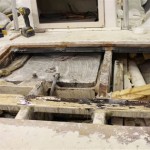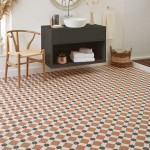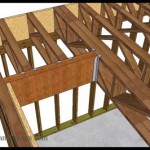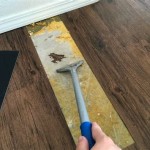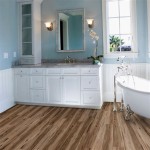Average Cost of Laying Laminate Flooring
Laminate flooring has become a popular choice for homeowners seeking an affordable and aesthetically pleasing alternative to hardwood, tile, or carpet. Its durability, ease of maintenance, and variety of styles contribute to its widespread appeal. However, understanding the costs associated with laying laminate flooring is crucial for budgeting and planning any home improvement project. This article provides a comprehensive overview of the average cost of laminate flooring installation, breaking down the various factors that influence the final price.
The overall cost of laying laminate flooring typically encompasses several components: the cost of the laminate material itself, the cost of underlayment (if required), the cost of labor for installation, and any potential additional expenses such as subfloor preparation or trim work. Each of these elements can vary significantly depending on the quality of materials chosen, the complexity of the installation, and the geographic location of the project.
Material Costs: Laminate Flooring and Underlayment
The price of laminate flooring is primarily determined by its thickness, quality, and style. Laminate flooring is manufactured in a range of thicknesses, typically measured in millimeters (mm). Thicker laminates tend to be more durable and offer better sound insulation. Generally, laminate flooring ranges in price from approximately $1 to $5 per square foot for the material alone. Budget-friendly options, often thinner and with simpler designs, can be found at the lower end of this range. Premium laminates, boasting realistic wood grain patterns, higher durability ratings (AC rating), and enhanced water resistance, command higher prices.
The AC (Abrasion Class) rating indicates the laminate's resistance to wear and tear. AC ratings range from AC1 to AC5, with AC1 suitable for light residential use and AC5 designed for heavy commercial traffic. Selecting a laminate with an appropriate AC rating is critical for ensuring its longevity and appearance in the intended environment. For example, a high-traffic area such as a hallway or kitchen would benefit from a higher AC rating than a bedroom.
In addition to the laminate itself, underlayment is frequently required, although some laminate products come with pre-attached underlayment. Underlayment provides a smooth, even surface for the laminate to rest upon, reduces noise transmission, and can offer additional moisture protection. The cost of underlayment typically ranges from $0.20 to $0.80 per square foot, depending on its thickness and features. Higher-end underlayment options may include features like sound dampening or enhanced moisture barriers, adding to the overall material cost.
Labor Costs: Professional Installation vs. DIY
Labor costs represent a significant portion of the total expense of laying laminate flooring. Professional installation typically costs between $2 and $5 per square foot, depending on the complexity of the job, the installer's experience, and local market rates. Complex installations involving intricate patterns, multiple rooms, or challenging layouts with many corners and doorways will generally incur higher labor costs.
Engaging a professional installer offers several advantages. Experienced installers possess the necessary tools and expertise to ensure the laminate flooring is properly installed, minimizing the risk of issues such as gapping, buckling, or uneven surfaces. They can also efficiently handle subfloor preparation, ensuring a level and stable foundation for the laminate. Furthermore, professional installers typically provide warranties on their work, offering peace of mind to the homeowner.
Alternatively, homeowners can opt for a DIY (Do-It-Yourself) installation. Laminate flooring is generally designed for relatively easy installation, often employing a click-lock system that allows planks to be snapped together without the need for adhesives. A DIY installation can significantly reduce the overall project cost by eliminating labor expenses. However, DIY installation requires a certain level of skill and patience, as mistakes can lead to aesthetic and functional problems.
Before embarking on a DIY installation, it's crucial to carefully research the installation process, gather the necessary tools (such as a tapping block, pull bar, saw, and measuring tape), and accurately measure the room to minimize waste. It's also essential to ensure the subfloor is clean, level, and dry before beginning the installation. Failure to properly prepare the subfloor can compromise the integrity of the laminate flooring installation and potentially void any manufacturer warranties.
For homeowners lacking experience with flooring installation, it may be prudent to consult with a professional installer to assess the project's complexity and determine whether a DIY approach is feasible. In some cases, hiring a professional for specific tasks, such as subfloor preparation or cutting around intricate features, while handling the bulk of the installation oneself, can be a cost-effective compromise.
Additional Costs: Subfloor Preparation and Trim Work
In addition to the cost of materials and labor, several other factors can impact the overall cost of laying laminate flooring. One significant factor is the condition of the subfloor. If the existing subfloor is uneven, damaged, or contaminated with mold or mildew, it may require repair or replacement before the laminate flooring can be installed. Subfloor preparation costs can vary widely depending on the extent of the required work, ranging from minor patching and leveling to complete subfloor replacement. Addressing subfloor issues is crucial for ensuring the long-term stability and performance of the laminate flooring.
Another potential cost is associated with trim work. Laminate flooring typically requires the installation of baseboards, quarter-round molding, or shoe molding to cover the expansion gap around the perimeter of the room. The cost of trim work depends on the type and quantity of trim material used, as well as the labor required for cutting and installing the trim. Homeowners can choose to replace existing trim or install new trim that complements the laminate flooring style.
Other potential additional costs may include the removal and disposal of existing flooring, furniture moving, and the purchase of specialized tools or equipment. It's always advisable to obtain multiple quotes from different flooring contractors to compare prices and ensure transparency regarding all potential costs. A detailed contract outlining the scope of work, materials used, and payment terms is essential for protecting both the homeowner and the installer.
The geographic location of the project can also influence the cost of laying laminate flooring. Labor rates and material prices can vary significantly between different regions. Metropolitan areas with higher living costs typically have higher labor rates compared to rural areas. Similarly, the availability of certain laminate flooring styles and brands may vary by region, affecting material prices.
Consider the long-term value when making decisions about laminate flooring. While a lower initial cost might seem appealing, opting for higher-quality laminate with a better AC rating can result in a longer lifespan and reduced maintenance costs over time. Carefully evaluate the intended use of the space and select a laminate that meets the specific needs and demands of the environment. For example, a moisture-resistant laminate is essential for areas prone to spills or humidity, such as kitchens and bathrooms.
Proper maintenance is crucial for extending the life of laminate flooring. Regular cleaning with a damp mop and appropriate cleaning solutions will help prevent dirt and grime from accumulating and damaging the surface. Avoid using excessive water when cleaning, as moisture can seep into the seams and cause swelling or warping. Using furniture pads under heavy objects will protect the laminate from scratches and dents. By following these simple maintenance tips, homeowners can ensure their laminate flooring remains attractive and durable for years to come.
In conclusion, understanding the various factors that contribute to the cost of laying laminate flooring is essential for making informed decisions and budgeting effectively. By carefully considering the cost of materials, labor, subfloor preparation, trim work, and other potential expenses, homeowners can plan their flooring project with confidence and achieve a beautiful and durable result.

How Much Should Laminate Flooring Fitting Cost In 2024 Checkatrade

Cost To Install Laminate Flooring A Complete Guide 2024 Forbes Home

Costs Laminate Flooring Book A Good Professional Zoofy

2024 Laminate Flooring Installation Cost Guide Angi

Laminate Flooring Cost 2024 How Much Is Floor

2024 Laminate Flooring Installation Cost Guide Angi

Laminate Flooring Cost 2024 How Much Is Floor

How Much To Install Laminate Flooring Lv Hardwood Toronto

How Much To Install Laminate Flooring Lv Hardwood Toronto

Laminate Flooring Costs In 2024 Oneflare
Related Posts

